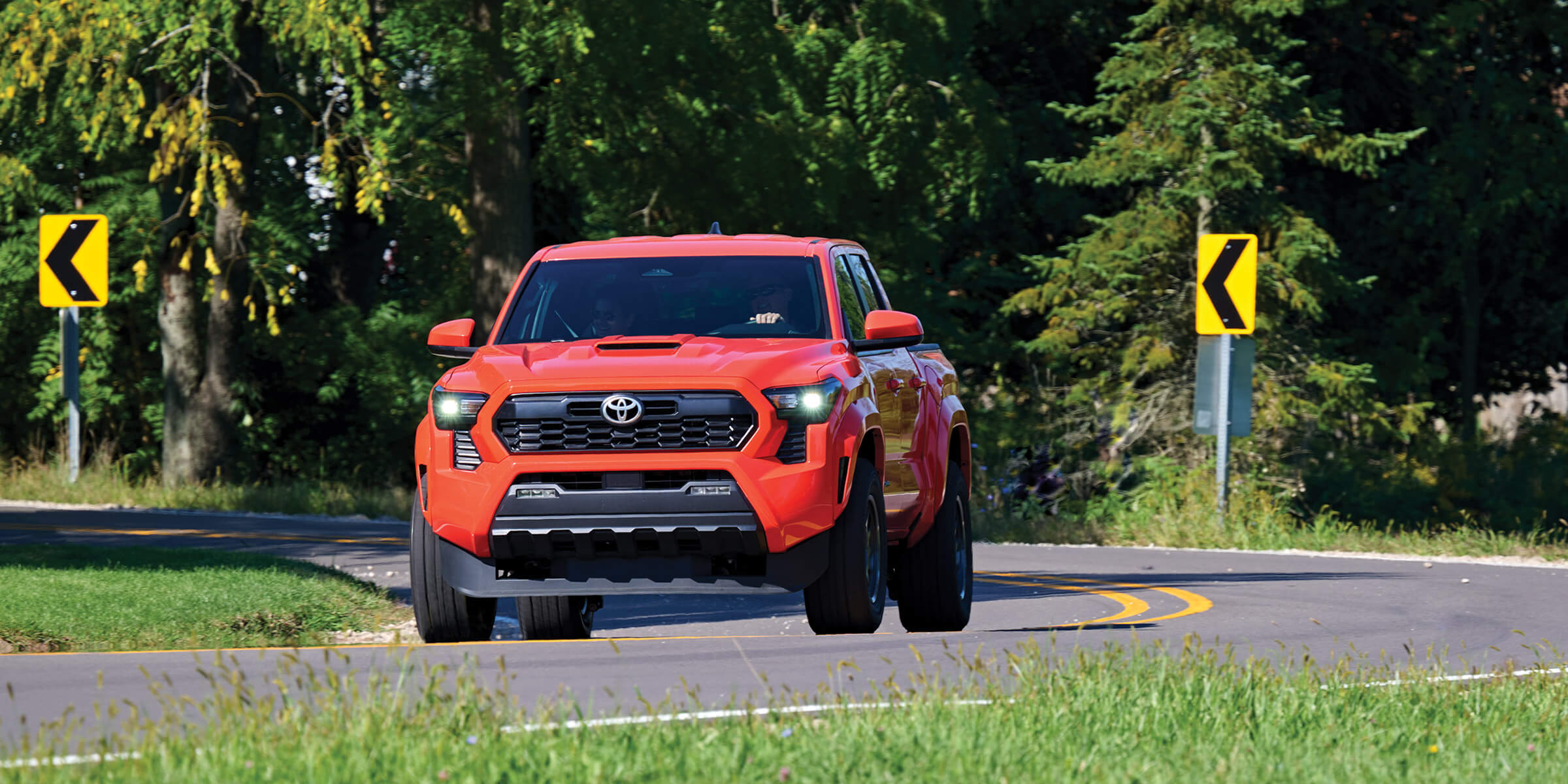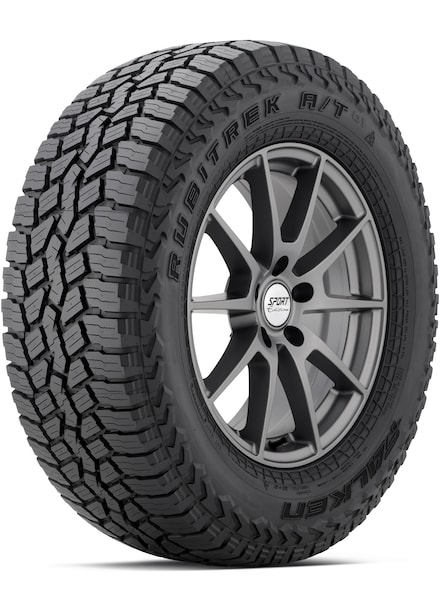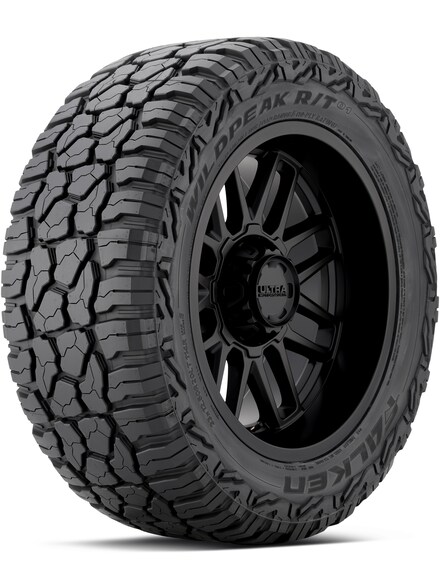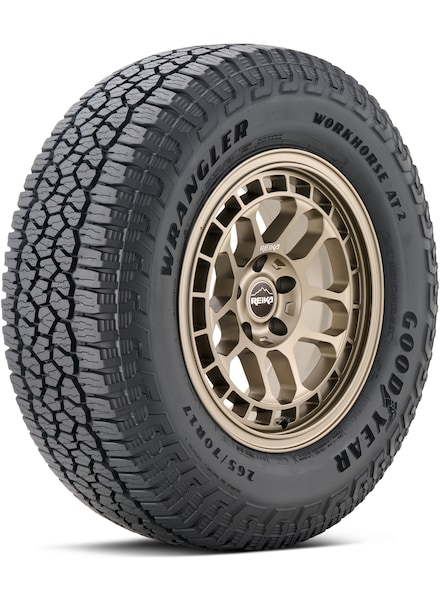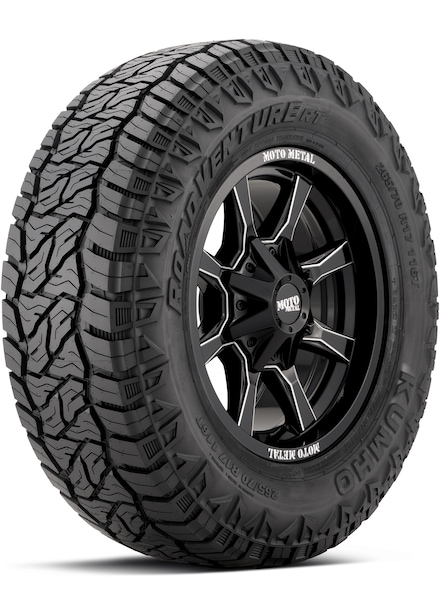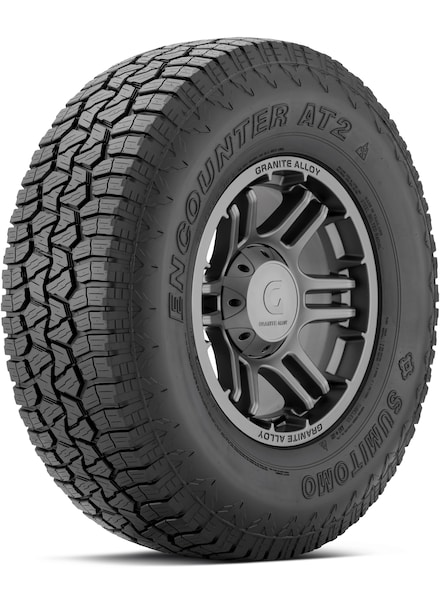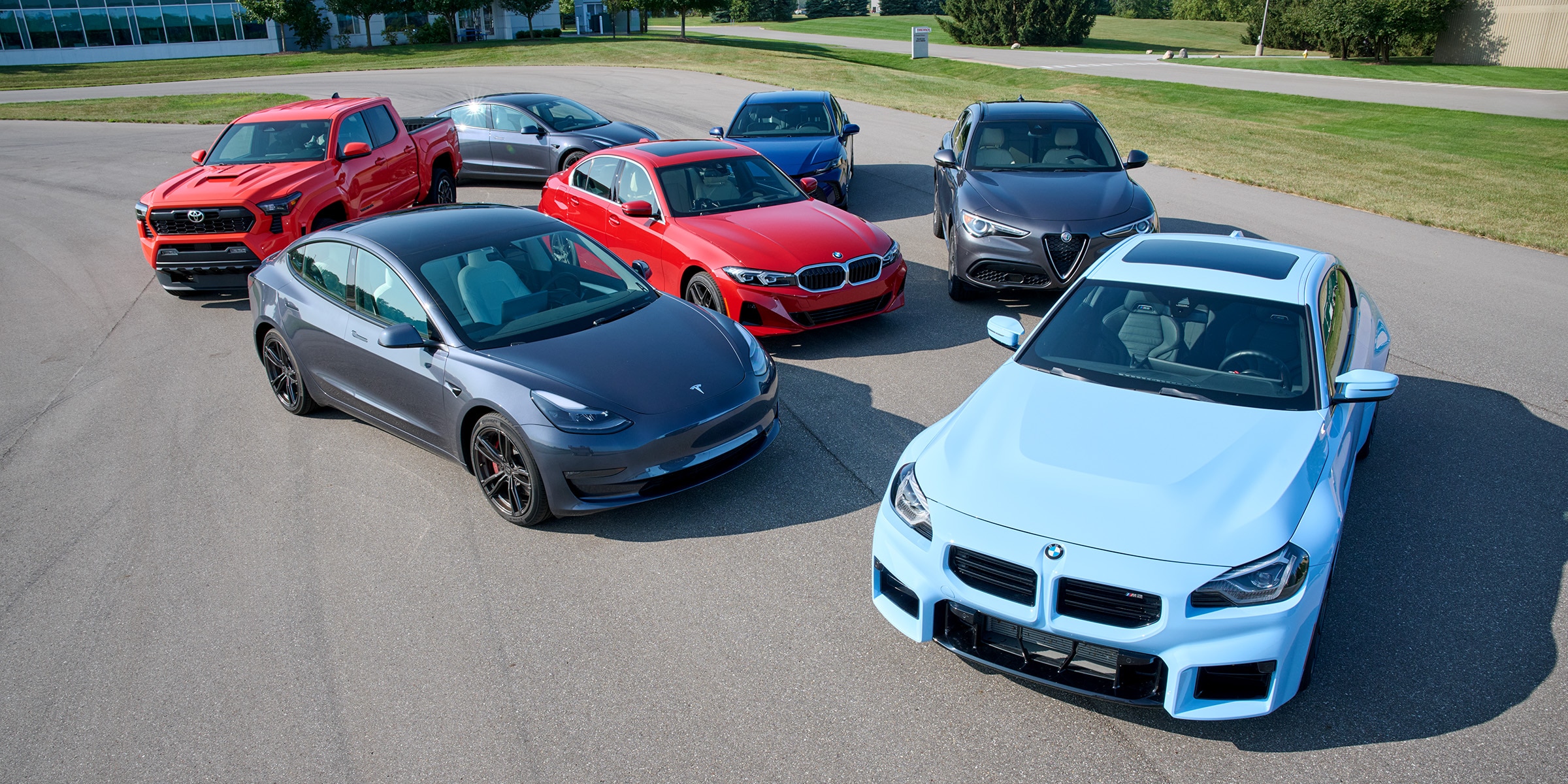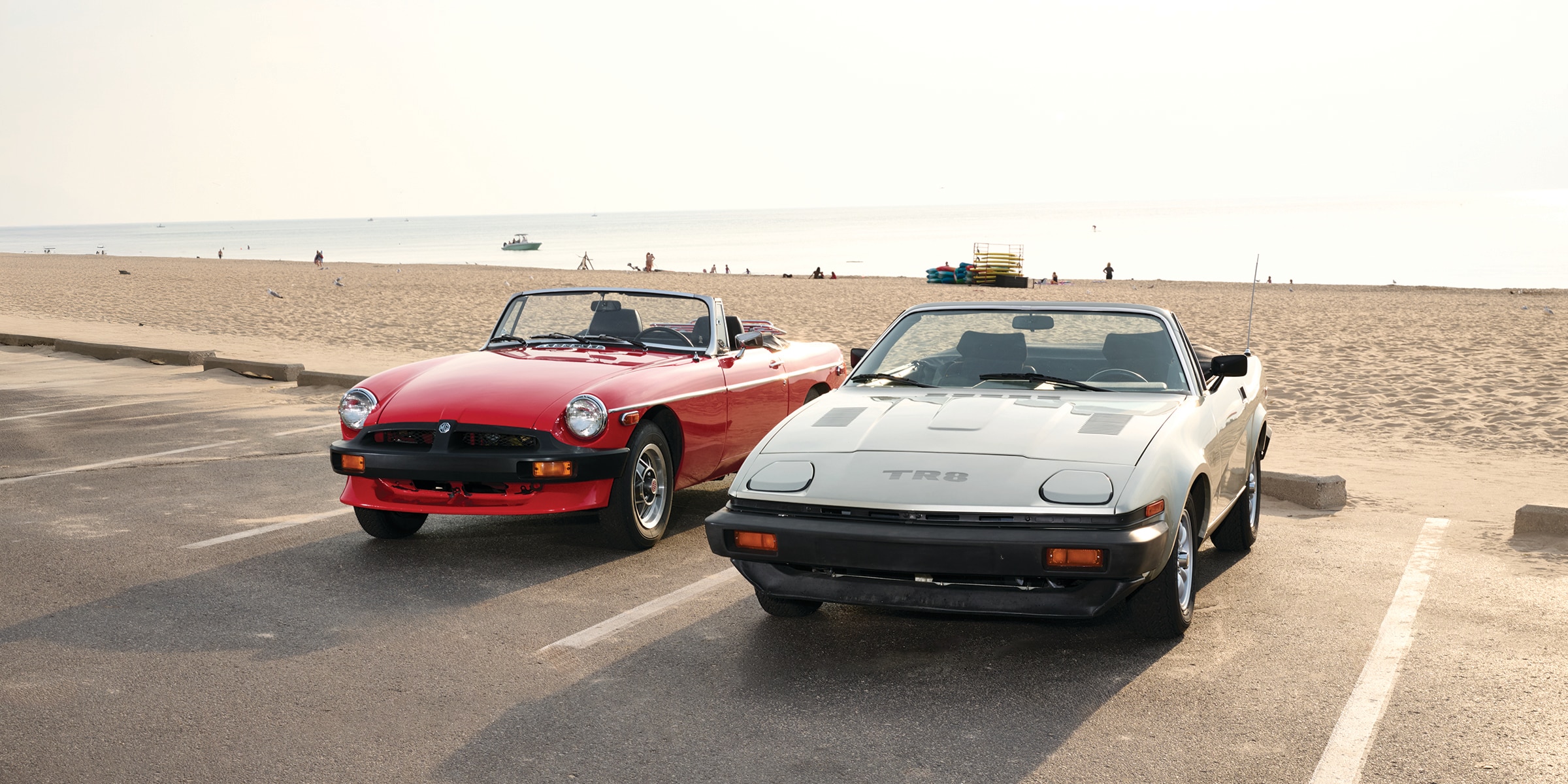Test Report
Introduction
All-Terrain tires are a broad group of products. They range from a primary on-road focus in their design, to the pure chunky off-road tires many people picture when considering the phrase "All-Terrain." That bold, aggressive styling feels right at home on vehicles built with squared-off front ends, higher ground clearance, and the unmistakable look of off-road readiness. And for those who actually put their vehicles to the test, these tires deliver the rugged capability to handle the trails, mud, and gravel when adventure calls.
At the same time, every off-road journey starts with some pavement. Whether it's getting to the trailhead, driving through town, or covering long stretches of highway between overlanding adventures, dependable on-road manners are just as essential.
Given that, it's nice to know how these tires handle the streets, and that's what we've set out to test. We'll be looking at two categories primarily: Off-Road All-Terrain, and Rugged All-Terrain. We've also included a well-known On-Road All-Terrain tire as a good comparison point.
We'll break down our experiences with each on our Toyota Tacoma in size 265/70R17, then discuss their traction and subjective behavior on both a wet and dry track to understand how these tires act when pushed to their limits, mimicking the kind of high-speed emergency maneuvers you might need to deal with to avoid an accident.
-
Road Ride: The TerrainContact A/T was taut, transmitting small bumps and undulations into noticeable movement through the vehicle, though it had a softer touch over large impacts. Road noise was controlled, producing a low, steady tone on coarse surfaces and a faint, rhythmic hum on smoother pavement. Steering engaged just off-center and reacted promptly to driver input, with light effort. It was direct and easy to guide.
Wet Track: In short: capable and responsive. Steering reacted quickly and precisely to small inputs, giving a sense of control and confidence through corners. Braking could be counted on reliably, and was objectively one of the strongest tires in the test. Lateral grip was strong enough to maintain stability without surprises. It was athletic and willing to do what we asked of it; carrying speed deftly through the lap, it was balanced nicely with its predictability.
Emergency Lane Change: Initial response was good, but then traction flattened out, leaving only moderate grip through the middle and exit gate. That made the initial evasion for the Emergency Lane Change maneuver straightforward, but carrying speed back to centerline required more care. It still completed the ELC consistently with only a minimal amount of upset, which made it one of the best experiences in this test.
-
Road Ride: We experienced a stiff ride on the Rubitrek A/T01, with noticeable jiggle from the suspension and a little extra movement over bigger hits, though never in a harsh way. Noise stood out more than anything else. There was a steady layer of coarse-surface roar, a persistent pattern tone that lingered down to very low speeds, and even a low-frequency hum at highway pace that cut through other sounds. Volume stayed moderate, but the sheer variety of tones made them difficult to ignore. Steering was light, quick to react, and accurate enough... but lacking much in the way of buildup or resistance. The feel leaned toward utility rather than driver feedback, consistent with a truck platform, but not engaging.
Wet Track: The Rubitrek A/T01 was somewhat challenging in the wet. The rear broke traction easily both under throttle and during cornering, making staying in control difficult. The front lacked responsiveness and grip, requiring extra care, little adjustments to maintain the line. Braking was solid, but the balance overall was a limiting factor for both our confidence and pace.
Emergency Lane Change: There was a hard speed cut-off for managing the Emergency Lane Change, and it was 45 mph. At 44, it could manage it, 44.5 mph maybe, though not without some struggle. At 45 mph (the target speed), however, it failed every attempt. Turn-in pointed the truck well enough at the start of the maneuver, but the follow-through lacked stability. The front end smeared rather than holding a line, response felt vague, and the truck never felt fully planted.
-
Road Ride: The WildPeak R/T01 was stiff, which, given its LT construction (and the only LT tire in the test), made sense. Small undulations came through as extra seat movement and gave the cabin a jumpy feel, especially on sections of uneven concrete. Potholes landed with some noticeable force compared to others in the group. Noise was a constant, and became the dominant trait at higher speeds. Pattern noise was at the forefront, carrying enough presence to make the tire feel loud overall. Steering mirrored its brand counterpart: light, quick, and reasonably responsive, without much variation in effort.
Wet Track: It didn't take long in the wet to determine the WildPeak R/T01 was down on grip. The front axle lacked both traction and responsiveness, which left the car feeling dull on corner entry and unsettled on exit. It stepped out readily under throttle, and recovery was not quick. That being said: once it broke loose it was manageable enough to control, but the frequency of those moments kept it from being anything more praiseworthy.
Emergency Lane Change: Steering was reasonably precise, giving just enough authority to guide the truck through the Emergency Lane Change...most of the time. Grip was limited, and understeer slowed the transition after the initial evasion and return-to-lane, actually helping it clear the final gate, even when the entry angle wasn't ideal. It was struggling, but still managed to complete the ELC during three-quarters of the attempts.
-
Road Ride: The Wrangler Workhorse AT2 felt cushioned, taking the edge off both big impacts and smaller undulations. It felt like that compliance also helped keep the chassis from shaking, adding to the sense of overall comfort. Noise was its primary drawback: on coarse pavement it produced a steady roar, and on smooth surfaces it layered on a distinct staccato element with both a low bassy hum and a mid-pitch tone. Once noticed, they were hard to tune out. Steering reacted immediately off center and built response with speed and added input. It felt precise and consistent, among the better examples in the test.
Wet Track: An impressive showing from the Workhorse AT2. Traction was strong wherever it was needed: whether we were braking, cornering, and maneuvering through the slalom. Steering felt sharp and moderately responsive, giving a good sense of control and allowing precise use of available grip. The rear could spin up under aggressive throttle, but it recovered quickly without unsettling the truck. Balanced, predictable, and confidence-inspiring, with just enough liveliness to make it engaging without being difficult to manage. Easily one of the best out here.
Emergency Lane Change: Solid grip, though it didn't respond especially quickly: it required large, decisive steering inputs to make the Emergency Lane Change work. Attempts to finesse it just resulted in understeer from the second gate through to the finish. With some aggression, though, it was predictable and consistent. After adjusting to match its preference for heavy inputs, the Wrangler Workhorse AT2 cleared the maneuver reliably, finishing with successful runs.
-
Road Ride: The Road Venture RT was on the stiff side overall, but without ever really crossing into harshness. Small cracks and joints came through clearly, though the suspension stayed composed enough to avoid feeling unsettled. Noise performance was generally acceptable: on most surfaces it produced a steady, broad-spectrum tone with only light pattern presence. At highway speeds on smooth pavement, it introduced some multi-tonal elements and a faint cyclical note, but those were less apparent at lower speeds. Steering felt quick, direct, and even, with consistent response across inputs.
Wet Track: Steering felt vague and rubbery, requiring big inputs to make anything happen. Traction was lacking, with the rears spinning up easily. It was eager to rotate, sometimes way more than desired - assuming 180 degrees is more than desired. Braking performance sat on the low side of the group. Recovery over the limit took longer than we would like, which only emphasized the lack of overall grip. Not terrible, but certainly not a highlight.
Emergency Lane Change: It wasn't a handling or performance concern necessarily, but interesting that around the skid pad it was loud, just screaming through the experience. As for the Emergency Lane Change: traction was limited, causing it to push through the maneuver. The Road Venture RT still completed about half of the ELC attempts, usually only missing by a small margin when it did.
-
Road Ride: Like most of the tires in this test, Rugged All-Terrain or otherwise, the Baja Boss A/T was firm, but handled big impacts with composure. Smaller, repetitive bumps still came through though, and added a touch of jumpiness to the cabin. As for sound: there was a mix of steady white noise and light pattern resonance, most noticeable on smooth pavement. Steering was, if not especially sharp, responsive and reasonably pointy, though overall less direct than the group's best.
Wet Track: The front end felt eager, direct, and pointy. If braking was timed just right, we could carry a surprising amount of speed and carve a clean line through corners, but that was more the exception than the rule. Too often it was off the mark and pushing, or the rear spun up under throttle; in the slalom it needed more steering input than expected. A decent effort overall, but with clear limits.
Emergency Lane Change: Steering felt surprisingly sporty for the category: good response and rear axle engagement. Just enough to add a touch of liveliness. Braking was solid, and overall handling was balanced. Traction was only modest, so it relied on controlled understeer to navigate the final gate during the Emergency Lane Change. Still, it was one of the very few tires to manage a 100% pass rate on the maneuver, tying for the best in the test so far.
-
Road Ride: Broadly firm: transmitting smaller cracks and undulations through the chassis while making larger impacts feel more substantial. It wasn't harsh, but it didn't offer much cushion either. Noise performance was similarly middle of the road: on coarse pavement it produced a steady broad-spectrum hum, while on smoother surfaces a mix of distinct tones became more apparent and (unfortunately) more intrusive. Steering felt competent, with minimal dead zone at highway speeds and direct response once engaged, though at lower speeds it required more input before the Tacoma reacted.
Wet Track: Traction was about on par with the median overall, though the limits felt on the lower end, and critically: more abrupt. Once pushed past the threshold, the Encounter AT2 became unsettled quickly and required careful inputs to stay tidy. Braking was fairly strong and drama-free, but lateral grip and stability left room for improvement. The rear tended to spin up often, and occasionally caught our drivers off-guard. Steering was serviceable, with reasonable response - if not a high degree of precision. Overall, it worked, but it asked more of the driver than most.
Emergency Lane Change: Steering response felt reasonably quick. It was predictable, easy to manage, and passed the Emergency Lane Change with a solid 90% success rate.
-
Road Ride: Stiff over small impacts, and only moderately forgiving on larger ones, this was one of the more aggressive rides we experienced. Over sharper bumps and bridge joints it felt jarringly rigid. Noise volume was consistently high, with multiple tones present: booming bass notes and humming layers across all surfaces and speeds. Steering was usable, but not particularly sharp. At low speeds it felt rubbery, like it was a step behind. At higher speeds, it firmed up slightly, but didn't cross the threshold into becoming truly precise. Acceptable for a truck, but never more than that.
Wet Track: Grip was limited, and it punished any attempt to push beyond its comfort zone - a mixed blessing, in that it felt reasonably capable within its limits, even if those limits were lower than other options. Steering felt sluggish, requiring larger inputs to get the car to respond. Cornering was a clear step down, with handling and balance that never inspired much confidence.
Emergency Lane Change: Even when we nudged the speed above 45 mph, it cleared the Emergency Lane Change every time. Steering response was clean, and the overall handling felt planted and composed, with no real vices to manage. It didn't deliver any standout "wow" moments, but considering the task, that wasn't a bad thing either. Consistent, confident, trustworthy.
-
Road Ride: The ride was firm throughout and carried a touch of residual bumpiness, especially over repeating undulations where the cabin picked up extra motion. Noise sat at a fairly high volume with a steady tread growl that became more wearing the longer it went on. Smooth pavement added some bass tones that stood out. Steering was fine: nothing precise or lively, but good enough for the job.
Wet Track: Straight to the point: the Open Country R/T Trail had the lowest wet grip of the group, and it showed at every stage of the lap. Braking had to be early and conservative, steering inputs needed to come well in advance of the corner, and throttle application was almost always met with wheelspin unless handled with extreme care. The steering itself felt delayed, with a noticeable lag between input and response that was especially frustrating in the slalom. It demanded patience, but even then the grip never really arrived.
Emergency Lane Change: Steering felt heavy and slow, with a broad range in the steering wheel that produced little to no change in direction. It tended to wash out early during the ELC maneuver. Once it started to push, it usually stayed that way until the attempt was over. Obviously, traction was limited, and it only managed to complete the exercise about one out of three attempts. Just plain dull, unresponsive, and short on grip for this application.
Test Summary
There's an old adage about judging fish by their ability to climb trees. It's easy perhaps, to look at many of these All-Terrain tires and feel they're ranked or judged harshly on just their asphalt performance. To an extent, that's fair, but the reality remains that, for many drivers, that's where they'll be used primarily even if off-road use is in the cards. Knowing how AT tires drive, not for the weekends or vacations, but for the everyday 9-5, the back-and-forth of daily use on paved surfaces is a useful metric even for the most adventurous drivers.
On that note, Continental's TerrainContact A/T was pretty decisively the top option in this test. It stands to reason that as the sole category representative for On-Road All-Terrain tires, that it would be a strong contender on paved surfaces, but it was both subjectively and objectively the best out here. The nicest ride, the quickest laps, and the best stopping distances from 60 mph. It does an excellent job reinforcing the importance of looking at category first for tire choice.
Goodyear's Wrangler Workhorse AT2, as one of the newest products in this test, also makes a great case for looking to see what the continual advancement of tire technology offers as well. It was very close behind Continental's tire in nearly every regard, and as an Off-Road All-Terrain pick, that's a strong place to be.
Mickey Thompson's Baja Boss A/T rounds out the top three of the test, and makes a compelling argument for the Rugged All-Terrain category doing a little bit of everything as well. Not to the same level - it was a noticeable step down in ride quality and noise comfort on the street compared to the other two - but a worthy contender nonetheless.
Falken's Rubitrek A/T01 and Sumitomo's Encounter AT2, as further Off-Road All-Terrain options fell into a kind of inoffensive middle-ground. Both were adequate without standing out as impressive or particularly egregious on the road, on the track, wet or dry. The Rubitrek A/T01 was a little quieter on the road, the Encounter AT2 had a little nicer steering, but in most respects they traded blows for similarly decent positioning.
Kumho's Road Venture RT stood out in this test for displaying very nice handling during our road ride, with a reasonable degree of comfort as well. Unfortunately, it didn't quite measure up as favorably to the rest of the group when pushed on the track - both among its category brethren and the broader group.
Toyo's Open Country A/T III deserves definite praise for being one of the few tires that cleared the Emergency Lane Change maneuver every time, and kept within the limits, was manageable in the wet, but it still had to contend with those limits being lower, and outside that narrow window it was generally unimpressive. Falken's WildPeak R/T01 was in a similar situation, a little nicer on the road perhaps, but little to be excited about.
Finally, Toyo's Open Country R/T Trail has the distinction of just not being all that good at anything we tested for. It wasn't really much of a step back on the road, or during ELC attempts compared to the larger group (although to be clear: it was a step back), but its performance in the wet was notably poor.
One of the more interesting revelations to be found here was not that the On-Road All-Terrain tire was the best option in that environment - that seems almost self-evident - but that there was a mix of results from each category up-and-down the chart. Categories are a useful consideration for getting you started with finding the right All-Terrain tire for your needs, but if your primary usage is driving on-road, it's good to check our testing and reviews first!
Ready to find your next set of All-Terrain tires? With over 10,000 Recommended Installer tire shops in our network, your next adventure is just around the corner.

